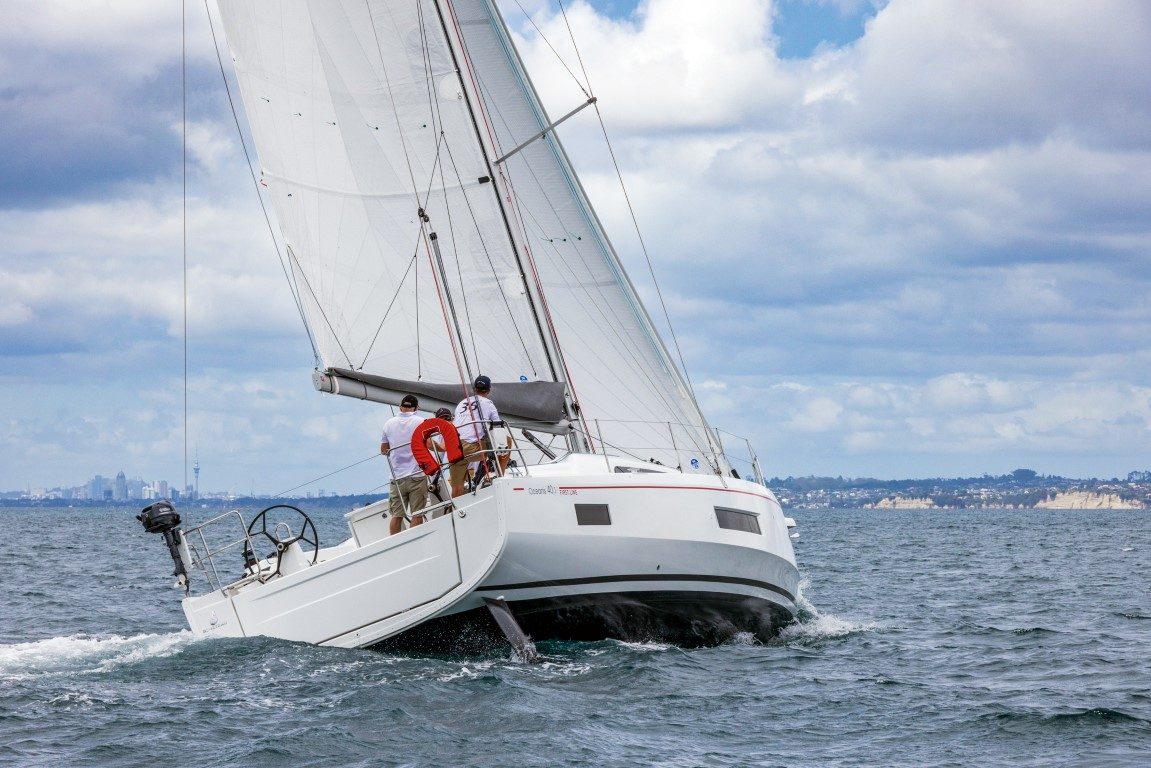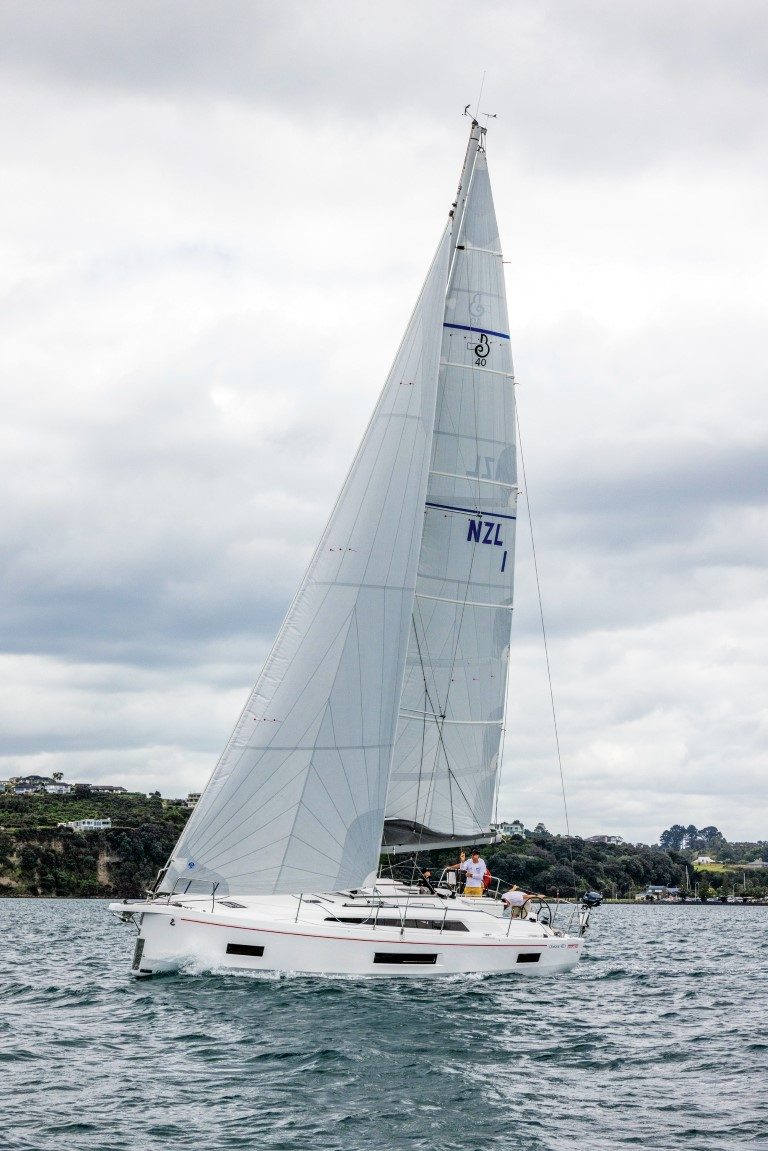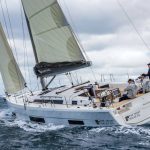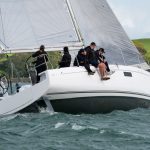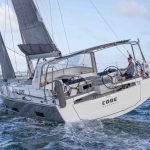‘Behemoth’ is a word which springs to mind or, perhaps more nautically, ‘leviathan’.
- Spacious interior for a 12m yacht, with light, bright decor below decks
- Beamy vessel so heel is minimal
- Twin rudders provide good response and feel
- Bow thruster makes docking a breeze and power winches ensure easy sail handling





